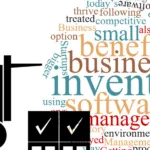Software and technology are making it easier and easier for entrepreneurs to start, manage, and improve business over time—at least, for the most part. These technologies also introduce new complexities, new obstacles, and new challenges that must be solved in order to reach a net gain of efficiency.
As an example, take Master Data Management (MDM) software. As Triniti describes it, MDM software reduces all forms of data collection and records within a business down to a single point (and a single platform from which it can be managed). In theory, it sounds like a perfect system that can eliminate the nightmare of multiple interconnected systems. But if you don’t know how to choose, plan for, and use your MDM software properly, it can do you more harm than good.
Common MDM Issues
To prevent this harm, you need to be aware of the most common problems business managers face with MDM software:
- Maintaining data quality. First, you need to understand that not all data will be of a similarly reliable quality. If you have a team of people working within the same system, they may have different systems of measurement, and some may be more dutiful than others about striving for accuracy and reliability. Over time, this can make your records inconsistent, especially if there are no checks and balances within your platform to keep your records as accurate as possible.
- Keeping data formats and units consistent. Because you’ll be measuring different metrics from different departments in the same place, you may find yourself unable to keep a straight system of formats and units. What one department describes in one set of terms, another department may describe alternatively. This makes it difficult for different departments to share information with each other without the backdrop of a set standard.
- Reconciling data. Occasionally, you may need to draw in data from other systems, or you may introduce new data sets that contradict with your old ones due to updating records or dealing with inputs from multiple employees. Reconciling data that feature different metrics can be a headache for anyone looking for definitive conclusions about your business’s performance. Your MDM system may not even be able to handle complex reconciliation actions without your manual intervention.
- Training your staff. While most MDM providers strive to make their systems as intuitive and user-friendly as possible, there’s no denying that most MDM platforms have a bit of a learning curve. Training your staff on the proper procedures for using the platform is time-consuming, and may leave you vulnerable to misuse if you don’t teach your users consistently. Having a formal training program in place can help mitigate the risks and challenges here.
- Implementing the software cleanly. If you already use a number of systems for various forms of management (like most businesses these days) integrating a new system to replace all of them can be a tricky business. Not only do you need to figure out how to migrate all your old data from your existing systems, you also have to ensure a smooth and instant transfer and keep all your staff updated on your timetables for the rollout.
- Dealing with mergers and acquisitions. Eventually, your company may have to deal with a merger or acquisition—either because it’s acquiring another company or because it’s being acquired. When that happens, all the problems of data reconciliation and replacing old systems emerge at once. Managing MDM software during a transition of this scale is a massive headache.
- Keeping costs to a minimum while preserving quality. Of course, MDM software isn’t free. Most are available with licensing deals or through a monthly subscription fee. Keeping your software management costs down to a minimum is a high priority—especially since MDM software can cost upwards of thousands of dollars—but you also don’t want to sacrifice quality just to get a cheaper price. Finding the balance between a reasonable price and the functionality you need is an art form, as well as picking the platform to give you the greatest overall boost in efficiency.
Addressing the Issues
Of course, it isn’t enough to merely be aware of the issues that MDM software can pose—you also have to know how to fight against them. You could introduce new policies or use patchwork fixes to better integrate your MDM software into your enterprise, but your best bet is to do your homework before you ever land on a solution. Every business will have unique needs, and there are dozens, if not hundreds, of MDM platforms available. Be proactive in your research and be picky with your selection; if you choose a perfect fitting product for your business, you’ll eliminate most potential problems from the get-go.








